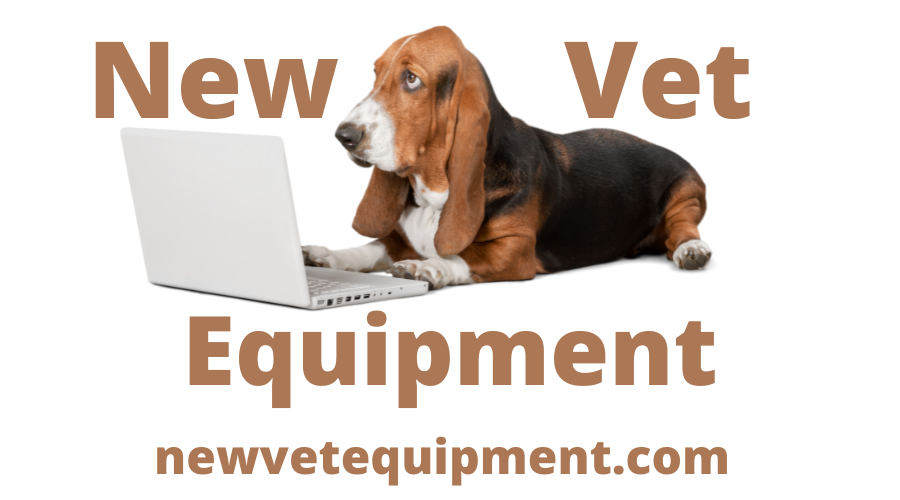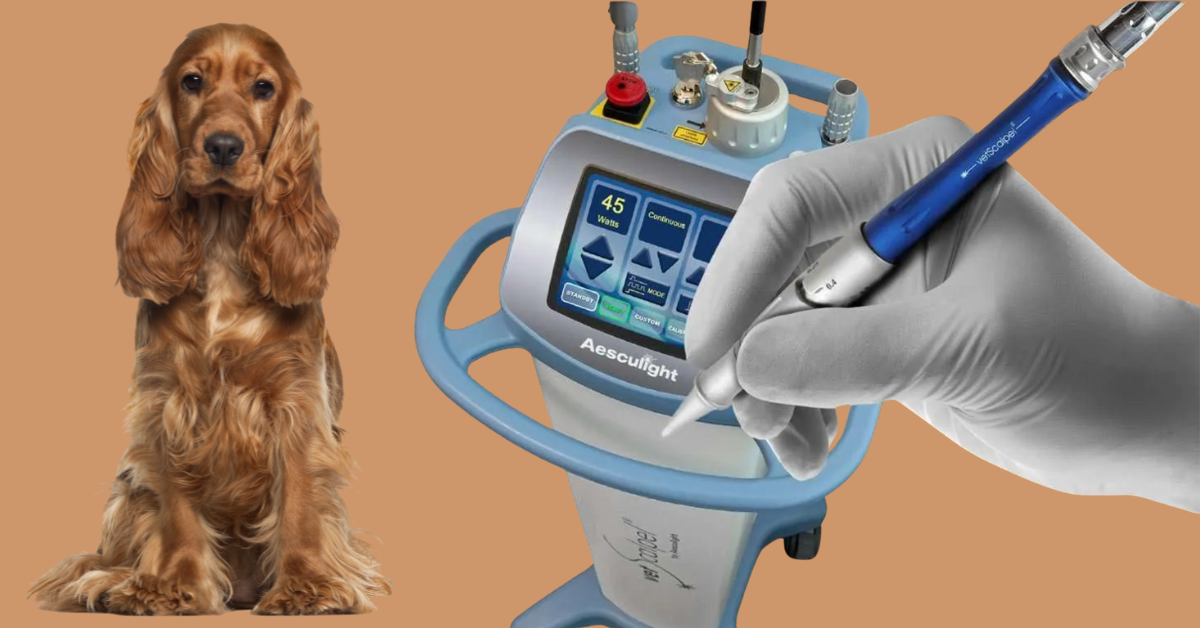Integrating CO₂ Laser Surgery Into Your Veterinary Practice: What to Expect
Why CO₂ Laser Surgery Belongs in Every Vet Practice
You’ve heard the buzz about CO₂ laser surgery — cleaner incisions, less bleeding, smoother recoveries — and maybe you’ve even seen a few impressive demos. But what does it really look like to bring this technology into your practice?
Transitioning to laser surgery isn’t just about new equipment. It’s about improving patient care, elevating your standard of medicine, and creating a smoother experience for both your team and your clients. Here’s what to expect when introducing a CO₂ laser into your veterinary practice.
Preparing Your Space: Setting Up for Success
Before your new laser arrives, evaluate your surgery suite setup. CO₂ lasers don’t require major renovations, but a few simple adjustments can make a big difference:
- Electrical requirements: Most units plug into standard outlets, but confirm with your manufacturer.
- Ventilation: Use a proper smoke evacuator to maintain air quality and visibility.
- Safety signage and eyewear: Lasers require specific protective glasses for both staff and patients.
- Workspace organization: Keep the laser cart accessible but away from high-traffic zones.
Taking time to fine-tune your surgical space ensures your team starts off confident and compliant.
Training Your Team
Your laser is only as effective as the people using it. Most manufacturers and distributors offer hands-on training when you purchase your device. Training usually covers:
- Operating controls and safety protocols
- Tissue interaction and power settings
- Case selection and clinical best practices
- Maintenance and cleaning procedures
Include your technicians early — they play a key role in setup, eyewear distribution, and smoke evacuation, ensuring smooth surgical flow.
Updating Safety Protocols
Like radiology equipment, CO₂ lasers come with specific safety requirements. You’ll need to:
- Post laser safety signage in the surgical area
- Maintain protective eyewear for all personnel
- Keep detailed laser use and maintenance logs
These steps ensure compliance and demonstrate your commitment to safety.
Communicating Value to Clients
Once your team is ready, it’s time to educate your clients. Most pet parents have never heard of CO₂ laser surgery — or imagine it’s the same as a cat toy pointer. Keep it simple:
“A CO₂ laser uses a concentrated beam of light instead of a scalpel. It seals small blood vessels and nerve endings as it cuts, resulting in less pain and faster recovery.”
Highlight what matters most to them — their pet’s comfort:
- Less pain: Seals nerve endings during surgery for reduced discomfort.
- Less swelling and bleeding: Creates a cleaner field and smoother recovery.
- Faster healing: Smaller incisions help pets bounce back sooner.
You can draw parallels to human medicine: “Just like human surgeons use lasers for delicate procedures, we use it to make your pet’s surgery as gentle as possible.”
Share the message on your website, in exam rooms, and through social media. If you add a small upgrade fee, frame it as an investment in their pet’s comfort and safety.
Measuring ROI: How Laser Surgery Pays for Itself
A CO₂ laser isn’t just a clinical upgrade — it’s a business investment that often pays for itself within a year. Here’s how to maximize ROI:
- Add a modest “laser surgery” fee ($50–$150 per procedure)
- Increase surgical volume as clients choose advanced care
- Attract new patients by marketing your laser-equipped practice
Over time, improved efficiency and fewer complications save both time and costs.
Start Small, Grow Confident
You don’t have to switch every surgery to laser right away. Begin with cases where it offers clear advantages, such as:
- Small mass removals
- Gingival surgeries
- Eyelid or perianal tumor removals
As your team gains experience, expand into more complex applications.
Bringing It All Together
Integrating a CO₂ laser into your veterinary practice quickly proves its worth — for your patients, clients, and staff alike. The learning curve is short, the impact is immediate, and the benefits last for years. With the right setup, training, and communication, laser surgery can become one of your clinic’s most valuable offerings.
Why More Veterinarians Are Replacing the Scalpel With a CO₂ Laser
Replace the Scalpel With a CO₂ Laser
Do you ever go into a soft-tissue surgery wishing for less bleeding, cleaner margins, and a calmer recovery for your patient? Across veterinary medicine, more surgeons are setting down the traditional scalpel and picking up a CO₂ laser.
At first glance, it might look like a flashy upgrade. But dig a little deeper, and you’ll find that this technology brings real, measurable benefits for your patients, your staff, and your bottom line.
Precision Without All the Bleeding
One of the biggest perks of a CO₂ laser is precision. Instead of a mechanical cut, the laser uses a focused beam of light that vaporizes tissue at the cellular level.
That precision means:
- Less bleeding: The laser instantly seals small blood vessels as it cuts, giving you a clear field and saving time on hemostasis.
- Less trauma: You’re not tearing or crushing tissue with mechanical pressure.
- Cleaner margins: Especially helpful in delicate areas like the mouth, eyelids, or perianal region.
Surgeons often describe it as “cutting with light” — and it really does feel that smooth once you’ve made the switch.
Happier Patients, Faster Recoveries
Because the CO₂ laser cauterizes nerve endings as it incises, many patients experience less postoperative pain and reduced inflammation. That translates to faster recoveries and fewer post-op complications.
You’ll often notice less swelling and bruising in soft-tissue cases and find that patients usually start eating, playing, and moving sooner.
Pet parents see the difference, too. When “Henry” bounces back faster after a lump removal or soft palate resection, that experience builds trust — and word-of-mouth referrals.
Efficiency in the OR
The first time you use a CO₂ laser, you’ll notice how much cleaner the surgical field stays. Visibility improves, suturing is easier, and procedures often take less time overall.
Veterinarians report time savings of 10–30% on common soft-tissue surgeries compared to traditional blade techniques. Over the course of a week (or a year), that efficiency adds up — both in time and in revenue potential.
Top 5 Surgeries That Benefit Most from a CO₂ Laser
CO₂ lasers are particularly valuable for soft-tissue procedures where bleeding, pain, and inflammation can complicate recovery. The laser provides clear surgical fields, reduced post-op discomfort, faster healing, and less swelling. Consider surgeries like:
- Mass Removals: Cleaner margins, minimal bleeding, and less trauma to surrounding tissue.
- Oral Surgery: Precise cuts in vascular areas, reduced bleeding, and improved comfort post-op.
- Soft Palate Resection: Excellent visibility and control in delicate, high-vascular regions of the oropharynx.
- Entropion or Eyelid Tumor Removal: Minimizes bleeding and swelling in sensitive periocular tissues, allowing better cosmetic and functional outcomes.
- Perianal or Perivulvar Tumor Excision: Laser cauterization provides hemostasis and reduces risk of infection in these challenging, bacteria-prone areas.
A Cleaner, Safer Veterinary Practice
On top of its surgical benefits, laser surgery can also reduce the risk of infection. The high-energy beam sterilizes as it cuts, eliminating bacteria in the incision line.
Less bleeding and less tissue trauma also mean fewer open wounds and less drainage, so you’ll spend less time managing wound complications or bandage changes.
A Better Experience for Your Clients
From your client’s perspective, laser surgery sounds modern — because it is. But it’s not just a marketing buzzword; it’s a meaningful advancement that improves patient outcomes.
When you can tell pet owners that:
- The procedure involves less bleeding and discomfort
- Their pet will recover faster and likely need fewer pain medications
- The technology offers a cleaner, safer incision
…you’ve just elevated your practice’s image while genuinely improving patient care.
Return on Investment
Yes, a CO₂ laser is an investment — typically between $25,000–$45,000, depending on the model and features. But when you integrate it into your daily caseload (spay/neuters, mass removals, gingival hyperplasia, soft palate resections, etc.), the ROI becomes tangible.
Practices that charge even a modest $75–$150 laser surgery fee per case can see the unit pay for itself within the first year. And that’s before you factor in time saved, client satisfaction, and surgical precision.
Elevating Your Standards
Switching from a traditional surgical knife to a CO₂ laser doesn’t just modernize your practice — it elevates the standard of care. You’ll perform cleaner, faster surgeries, your patients will heal more comfortably, and your clients will see the value immediately.
For many veterinarians, once they experience “cutting with light,” there’s no going back.
A Veterinary Buyer’s Guide to Today’s Leading CO₂ Lasers
Today’s Leading CO2 Lasers for Veterinary Surgery
Shopping for a CO2 surgical laser is a smart move—these systems are workhorses for precise soft-tissue procedures. But the market can feel messy: vet-specific brands, refurbished human-market systems, tube services, and a wide range of warranty options. This guide compares what matters most so you can choose confidently.
The Three Serious Contenders
VetScalpel / Aesculight
Vet-focused family of CO2 lasers with veterinary handpieces, presets, and extensive training support.
Lumenis AcuPulse
Human surgical/aesthetic platform commonly repurposed for vet clinics; strong performance, varies by reseller.
LightScalpel LS-2010
Compact, modern CO2 laser with flexible fiber delivery, 50 presets, autoclavable handpieces, and built-in training.
A Closer Look at Each Laser
1) Aesculight / VetScalpel (Veterinary-Focused)
- What it is: CO2 lasers built for veterinary use (VS-3020, VS-4025, VS-4530) with flexible fiber delivery and veterinary presets.
- Pricing: Typically $30k–$45k new or $8k–$15k used, depending on age and configuration.
- Warranty & support: 5-year warranty, veterinary training, and trade-in options.
- Best for: Clinics wanting a dedicated veterinary system with strong manufacturer backing.
2) Lumenis AcuPulse (Cross-Market / Refurbished)
- What it is: Human CO2 platform with SuperPulse modes and scanner options, often placed in vet settings via refurb channels.
- Pricing: $13k–$15k for refurbished, $20k–$30k for newer dealer units.
- Warranty & support: 30–90 days typical for refurbished units; longer for new.
- Best for: Practices seeking high performance at lower cost, comfortable with cross-market service.
3) LightScalpel LS-2010 (Newer Entrant, Vet-Friendly)
- What it is: Air-cooled CO2 laser with 20 W continuous, 10 W SuperPulse, fiber delivery, and autoclavable handpieces.
- Pricing: Quote-based, similar to other high-end veterinary lasers.
- Warranty & support: 5-year parts & labor warranty plus on-site training.
- Best for: Clinics wanting a compact, modern system with strong warranty and included training.
Side-by-Side Comparison
| Category | VetScalpel / Aesculight | Lumenis AcuPulse | LightScalpel LS-2010 |
|---|---|---|---|
| Upfront Cost | $30k–$45k new; $8k–$15k used. | $13k–$30k depending on dealer/refurb status. | Quote-based; similar to other vet-grade CO2 systems. |
| Warranty & Training | 5 years; includes veterinary training. | 30–90 days typical; longer on new units. | 5 years; includes on-site training session. |
| Clinical Fit | Veterinary-built; presets and vet handpieces. | Versatile but designed for human procedures. | Modern fiber system; compact and user-friendly. |
What to Confirm Before Buying
- Exact warranty terms — especially tube and consumable coverage.
- Local service support and turnaround time for repairs.
- Training options: on-site or virtual, initial and ongoing.
- Financing terms: lease vs. purchase and promotional options.
TL;DR — Quick Recommendations
- Best full veterinary support: VetScalpel/Aesculight — proven systems with 5-year coverage and training.
- Best budget flexibility: Lumenis AcuPulse — strong power and low entry cost via refurbished options.
- Best warranty and training mix: LightScalpel LS-2010 — compact design with on-site training included.








